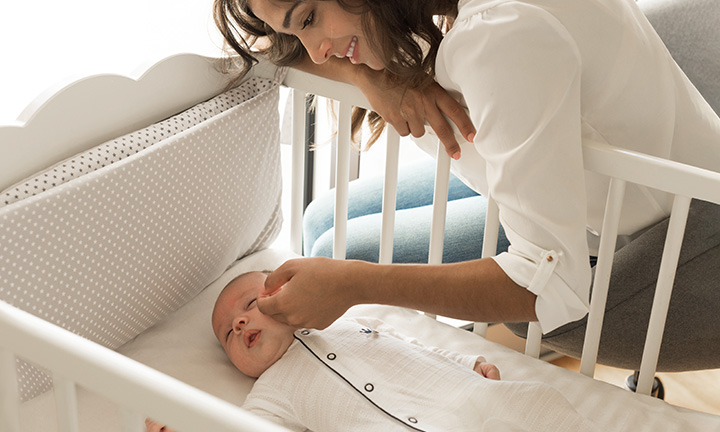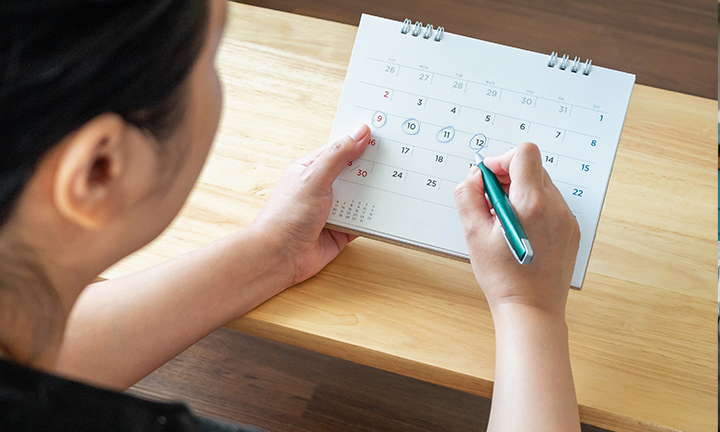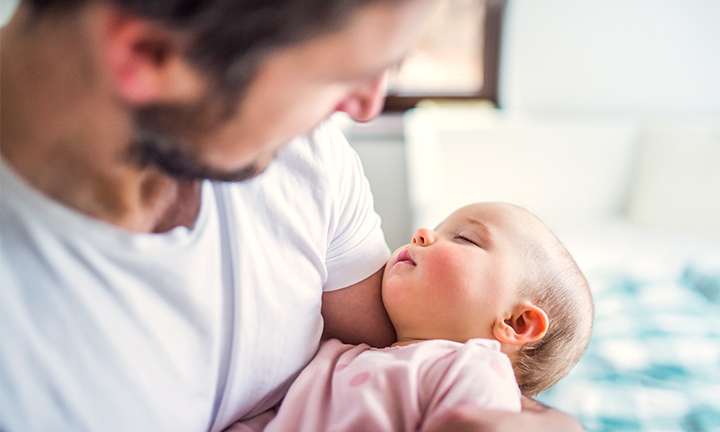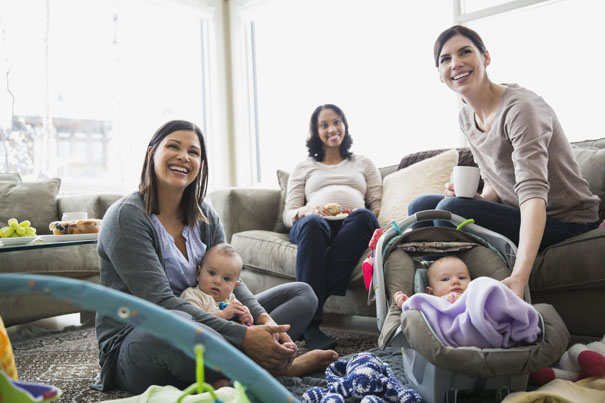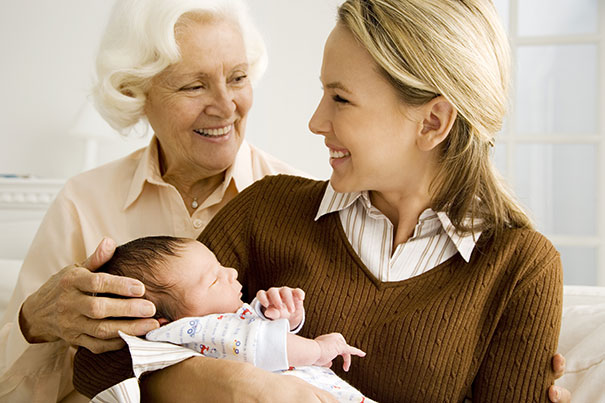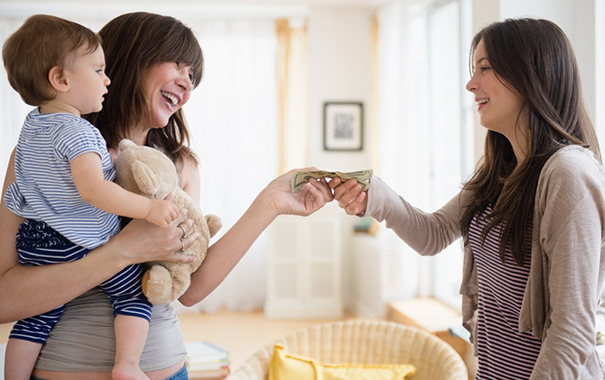
How to Babyproof Your Home: Tips, Checklist, & Safety Advice


Babyproofing your home becomes essential once your little one starts crawling, standing, or exploring. Knowing how to baby-proof your house effectively means identifying and reducing hazards in every room, helping your child explore safely and confidently.
Here are some key steps to get started:
Install safety gates to block off stairs or unsafe areas
Use outlet covers and secure heavy furniture to prevent tipping
Lock cabinets and drawers—especially those with cleaners, tools, or sharp items
Set your water heater to 120°F to help prevent burns
Add corner guards to furniture with sharp edges
Keep cords (from electronics or blinds) out of reach to avoid entanglement risks
Skip tablecloths or hot items placed within your child’s reach
If you have firearms in your home, keep them locked up and the ammunition stored separately.
Room-by-room babyproofing—from the kitchen and bathroom to the nursery and garage—helps create a safer space for your little one to explore. Tools like childproof cabinet locks and outlet covers are helpful, but active supervision is always essential.
Below, you’ll find a practical guide on how to safely baby-proof your home, plus a complete babyproofing checklist and trusted tools to support you along the way.
What Is Babyproofing?
Having a little one at home brings plenty of joy and movement. As your baby becomes more mobile, you may start to notice just how many everyday items could pose a risk. While adults easily navigate things like hot stoves, sharp corners, or unsteady furniture, a curious baby or toddler won’t yet understand what’s dangerous.
That’s where babyproofing comes in. It's the process of spotting potential hazards and making your home safer for your child. This might mean securing furniture, using childproof cabinet locks, or blocking off certain areas. Learning how to safely baby-proof your home is an important part of supporting your child’s exploration while reducing the risk of injury.
When to Babyproof Your Home
You don’t need to wait until your little one is crawling to begin thinking about safety. Some parents start babyproofing their home during pregnancy, while others begin once the baby is born. Starting early may help ease the transition into the more mobile stages.
Once your little one starts to crawl and move about by themselves, you need to take extra steps to deal with dangerous objects and hazardous locations, because to them, the whole house looks like a playground!
Prepare your home by babyproofing it before your baby is on the move. A good plan is to get down to your baby’s level (that’s right—crawl around on the floor!) to see what your baby sees and what could pose a hazard. As your little one grows older and becomes more active, try to anticipate where their curiosity and reach may take them.
Tips on How to Babyproof Your Home
Once your baby is on the move, your home becomes a whole new world to explore—and a few simple changes can go a long way toward creating a safer space. Learning how to babyproof your home often starts with room-by-room adjustments that address common hazards.
Here are some general babyproofing tips that apply to nearly every area of your home:
These steps can help you feel more confident as you learn how to baby-proof your house in a way that grows with your child. As your baby becomes more mobile, stay alert and flexible; child-proofing house spaces is an ongoing process.
Babyproofing the Nursery
Your baby’s room is a place for rest, play, and lots of diaper changes, so safety matters. Here are a few innovative ways to babyproof the nursery and help create a safer space:
Crib. Your baby spends a significant amount of time in their crib and is usually unattended, so creating a completely safe sleep environment is crucial. Make sure the crib meets current safety standards; crib slats should be no more than 2 3/8 inches apart, and use a firm, snug-fitting mattress. Never have pillows, blankets, stuffed animals, or bumpers in the crib.
Bed. Once your baby starts climbing out of the crib, consider moving to a low bed or floor mattress. Children under six shouldn’t sleep on the top bunk.
Changing table. Choose a sturdy table with a two-inch guardrail and a concave changing pad. Always keep one hand on your baby during diaper changes—even if you're using the safety strap—and store supplies within reach but out of your baby's grasp.
Toy box. Skip the lid. Use an open toy box or basket to avoid pinched fingers or the risk of getting trapped.
These small changes can go a long way toward child-proofing your house, where your baby spends the most time. If you're looking for more support as you navigate the early stages of parenting, the Pampers New Parents’ Guide offers helpful tips, checklists, and tools to guide you through everything from setting up the nursery to understanding sleep routines.
Babyproofing the Kitchen
The kitchen is full of tempting but risky items for a curious child, from sharp tools and breakable objects to hot surfaces and cleaning supplies. Here are some smart ways to help make this space safer:
Store sharp objects. Keep knives, scissors, and other sharp tools well out of reach or locked in a drawer or cabinet.
Use door latches. One of the most effective ways to protect your child is by installing childproof locks on drawers and baby-proofing cabinets that contain hazardous or fragile items like cleaning products, glassware, or medications. Many child-proof cabinet locks are easy for adults to use but hard for little hands to open. You can also add locks to your fridge or oven door for extra safety.
Safeguard the stove. Use knob covers to prevent your child from turning on the stove. When cooking, turn pot handles inward or use the back burners to keep hot pans out of reach.
Unplug and tuck away appliances. When not in use, unplug small kitchen appliances and keep cords hidden so little ones can’t pull or play with them.
Babyproofing the Bathroom
The bathroom might be part of your child’s daily routine, from bath time to brushing teeth, but it’s also full of potential hazards. Due to the presence of water, slippery surfaces, and cleaning products, it’s especially important to supervise your child at all times.
Here are a few ways to help make the bathroom safer:
Install cabinet locks. Use childproof locks or childproof cabinet locks to keep cosmetics, cleaning supplies, and medications safely out of reach. Just like in the kitchen, baby-proofing cabinets here helps prevent access to dangerous items.
Practice bathtub and water safety. Never leave your little one unattended in the bath. Drowning is a risk, even in a few inches of water. Other safety strategies include applying nonslip pads on the bottom of the tub and placing a cushioned cover over the faucet to help provide a safe and fun bath time for your toddler. To make sure your child isn't scalded by water that's too hot, you can adjust the temperature of your water heater, as well as always testing the bath water before your child gets in the tub.
Secure the toilet. Keep the toilet lid closed after use and consider adding a childproof lock to prevent curious toddlers from lifting the lid or exploring inside.
Babyproofing the Living Room
Your living room might be the heart of your home, but it can also hold a few hidden hazards for little explorers. Here are some simple tips for babyproofing your living room:
Cover sharp corners. Add corner guards to coffee tables, TV stands, or any furniture with sharp edges to help prevent bumps and scrapes.
Use cordless window coverings. Cords from blinds or curtains can pose a strangulation risk. Use cordless options when possible. If you have cords, secure them with wall brackets or floor mounts to keep them out of reach.
Protect against heat sources. If you have a fireplace or wood-burning stove, use a sturdy screen to block direct access. Never leave your child unattended near an open flame or heat source. You can also use protective covers on radiators to help prevent burns.
Babyproofing the Backyard, Garage, and Car
Outdoor and storage areas can pose risks you may not think about right away. Here are a few quick ways to help keep things safer:
Backyard. Keep gates locked and ensure fences are secure. Store gardening tools, chemicals, and grills out of reach. Always supervise water play and cover or fence off pools.
Garage. Lock cabinets and keep sharp tools, paint, and cleaning supplies safely stored. Children shouldn’t be left unsupervised in the garage.
Car. Use a car seat that is appropriate for your child’s age and size. Keep doors locked when the car is parked and never leave your child alone inside, even for a moment.
These quick precautions help extend your childproofing checklist beyond the home, so your little one is safer wherever you go.
Babyproofing Checklist
Check out our downloadable babyproofing checklist to help you create a safe environment for your little one at home.
Use this baby-proofing list as a starting point and adjust it based on your home layout and your baby’s stage of development. Keeping your childproofing checklist updated can help you stay ahead as your child grows and becomes more mobile.
FAQS AT A GLANCE
Many parents begin babyproofing during pregnancy or early infancy. It’s helpful to have basics in place before your baby starts crawling, usually around 6 to 10 months, so you’re ready when they begin exploring.
The Bottom Line
As your little one grows, so does their curiosity, and each stage brings new challenges and adventures. Helping to keep them safe at home begins with thoughtful baby-proofing tips that evolve as they develop.
From installing gates and childproof locks to covering outlets and anchoring furniture, the strategies we’ve shared can help reduce common hazards throughout your home. Using a simple babyproofing checklist enables you to stay on top of safety updates as your child becomes more mobile and independent.
Safety also extends beyond the home. You can explore other helpful topics, like toddler bike safety, or browse more parenting tips to support your journey.
Need help tracking your baby’s growth as they develop new skills? Try the Pampers Baby Growth Chart Calculator to see how your little one is growing compared to typical patterns.
And if you're looking to save along the way, the Pampers Rewards App offers digital deals to make parenting just a little easier.
- American Academy of Pediatrics, Caring for Your Baby and Young Child: Birth to Age 5, 7th ed. (New York: Bantam Books, 2019).
- healthychildren.org. "5 Common Household Products That Are Dangerous to Curious Toddlers."
- healthychildren.org. "Backyard Safety."
- healthychildren.org. "Bathroom Safety."
- healthychildren.org. "Childproofing Your Home."
- healthychildren.org. "Kitchen Safety."
- healthychildren.org. "Laundry Room and Detergent Safety."
- healthychildren.org. "Make Baby’s Room Safe."
- Kids Health. "Childproofing Your Home."
- Kids Health. "Household Safety: Preventing Burns and Fires."
- Kids Health. "Safety: Falls."
- womenshealth.gov. "Making Your Home Safe for Baby."
Read more about Baby
Related Articles
Join a World of Support
through Pregnancy and Parenthood.
TRACK WITH TOOLS
LEARN WITH EXPERTS
GET REWARDED
